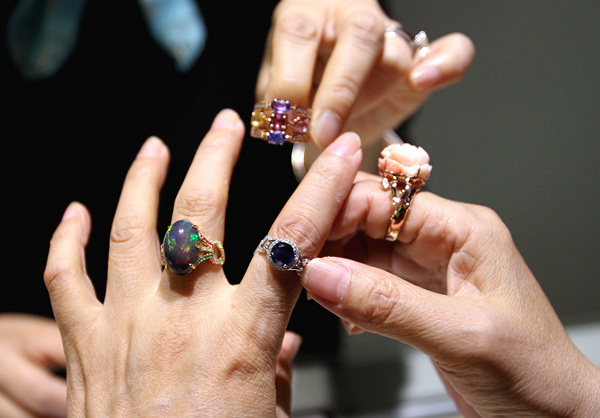
Sample pieces of color stone jewelry sold at Gemoiselle. ZHANG WEI / CHINA DAILY
"Buying diamonds seems like an unrealized dream for many women. People who were born in the 1960s and 1970s were unable to afford diamonds when they got married. "With economic and social development, as well as improved living standards, diamonds are now no longer a dream for them," she said.
Like many other jewelers, Shanghai Laofengxiang Co Ltd, a traditional jewelry chain in China, is turning its attention to millennial women.
"Young Chinese women are fond of fashionable commodities. So, our company will produce more customized jewelry in the future, and set the price at a relatively affordable level," said Wang Ensheng, manager of the marketing department at Shanghai Laofengxiang. "This way, they can buy more accessories for different occasions."
The practice of Hong Kong Lukfook Jewelry is even more bold. In order to attract young women, it plans to set up nail-care areas in some of its mainland stores, and hire good-looking bus drivers to take millennial women straight to their shopping destinations.
Bruce Cleaver, chief executive of De Beers, the largest diamond producer in the world, said millennials don't buy diamonds just around marriage proposal, engagement or wedding. That was the trend during the time of their parents and grandparents, who bought diamonds as a symbol of social status.
Now, according to Chinese business magazine CBNweekly, young consumers buy diamonds for self-expression. So, product design has become very important.


















































